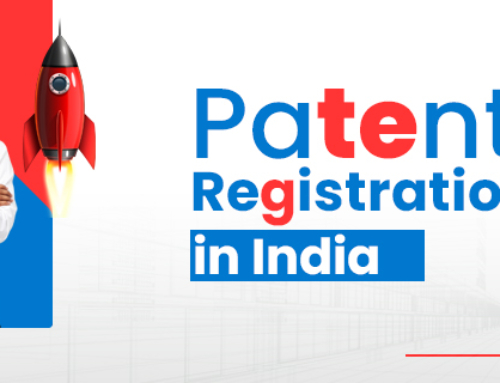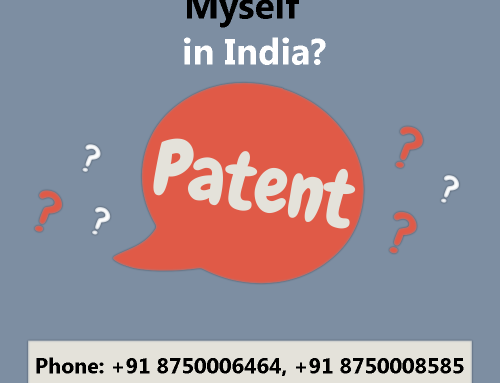Patent filing in India has become increasingly crucial, especially in the rapidly evolving technology sector. This comprehensive guide aims to delve into the intricate details of patent filing procedures in India, shedding light on its technical aspects, requirements, and the steps involved in securing patent protection for innovations.
Understanding Patents:
At its core, a patent is an exclusive right granted to an invention under the Patents Act. Defined as a new product or process with an inventive step and industrial applicability, patents serve as vital shields against unauthorized use, sale, or importation of the patented product or process. It’s imperative to meet the patentability requirements, ensuring novelty, inventive step, and industrial applicability.
Technical Aspects of Patent Filing:
The patent filing process in India encompasses several technical aspects, beginning with the application itself. Form 1 serves as the initial step, requiring detailed inventor information. Additionally, Form 2 necessitates a comprehensive specification of the invention, distinguishing between provisional and complete specifications. It’s noteworthy that complete specifications must be submitted within twelve months to avoid abandonment.
Moreover, Form 3 mandates a statement and undertaking for international patent applications, emphasizing transparency in filing procedures. Form 5 underscores the declaration of inventorship, crucial for establishing ownership rights. Lastly, Form 26 facilitates the appointment of a patent agent, streamlining communication with regulatory authorities.
Read Also This – Patent Registration in India
Steps to Register a Patent:
Navigating through the patent registration process involves meticulous planning and adherence to regulatory guidelines. Firstly, inventors must meticulously document every detail of their invention, ensuring compliance with patentability criteria and exclusionary provisions outlined in section 3 of the Patents Act.
Patent Search:
Conducting a thorough patent search precedes drafting the patent application, crucial for identifying existing inventions and avoiding potential rejections. Subsequently, drafting the application demands meticulous attention to detail, encompassing various facets of the invention, from its background to its industrial application.
Patent Registration:
Filing the application marks a significant milestone, with options for both physical and electronic submission. Timely submission of requisite forms alongside applicable fees is paramount for initiating the patent registration process. Notably, filing complete specifications within the stipulated time frame secures precedence for the application.
Publication and Examination:
Upon submission, patent applications undergo an 18-month publication cycle, as per Rule 24 of the Patent Rules. However, applicants seeking expedited publication can opt for early publication by filing Form 9, expediting the process within one month of submission.
Filing an examination Request:
Subsequent to publication, applicants must file a request for examination within 48 months, triggering scrutiny by regulatory examiners. While examination isn’t automatic, timely submission of examination requests ensures procedural continuity. Addressing objections raised during examination necessitates prompt responses within a six-month window.
Grant of Patent:
Successful resolution of objections culminates in the issuance of a patent grant order, marking the culmination of the patent registration process. Any opposition to the grant must be filed within one year of publication, highlighting the importance of vigilance during post-examination phases.
Strategies and Considerations to Maximize Patent Filing:
1. Strategic Patent Drafting:
Crafting a robust patent application necessitates a strategic approach aimed at maximizing the protection and commercial potential of the invention. Inventors should begin by conducting comprehensive prior art searches to assess the novelty of their invention and identify existing patents or publications that may impact patentability.
During the drafting phase, inventors must provide clear and detailed descriptions of their invention, including its technical specifications, functionality, and potential applications. Emphasizing the unique features and advantages of the invention strengthens its patentability and enables broader claims.
Strategic patent drafting also involves anticipating potential challenges or objections during examination and preemptively addressing them in the application. Collaborating with experienced patent attorneys or agents proficient in technical and legal aspects ensures the thoroughness and accuracy of the patent specification.
Furthermore, inventors should consider the long-term implications of their patent claims, aiming to secure broad yet defensible protection for their invention. This strategic approach enhances the value of the patent portfolio and facilitates future licensing or enforcement efforts.
2. International Patent Protection:
In an increasingly globalized economy, securing international patent protection is essential for maximizing the commercialization potential of inventions. The Patent Cooperation Treaty (PCT) offers a streamlined mechanism for filing patent applications in multiple countries, providing inventors with a cost-effective and efficient route to international protection.
By filing a PCT application, inventors can delay the decision to pursue patent protection in specific countries while establishing an international filing date that preserves their priority rights. Subsequently, applicants can enter the national or regional phase in designated countries, tailoring their patent strategy to target key markets.
International patent protection not only safeguards inventions against infringement in diverse jurisdictions but also enhances their attractiveness to investors and potential licensees. Inventors should carefully evaluate market opportunities and patentability criteria in target countries to optimize their international patent filing strategy.
Read Also This – How to Apply Patent Registration Online In India
3. Patent Prosecution Strategies:
Patent prosecution encompasses the interactions between patent applicants and patent offices during the examination and grant process. Developing effective prosecution strategies is essential for overcoming objections raised by patent examiners and securing robust patent rights.
Proactive engagement with patent examiners involves responding promptly and comprehensively to examination reports, addressing substantive issues and clarifying the novelty and inventive step of the invention. Collaborating with experienced patent attorneys enables inventors to navigate complex legal and technical challenges effectively.
Strategic amendments to patent claims or specifications may be necessary to overcome prior art references or objections based on lack of novelty or inventive step. Inventors should leverage the expertise of patent professionals to craft persuasive arguments and amendments that strengthen the patent application.
Moreover, patent prosecution strategies should align with broader business objectives, considering factors such as market dynamics, competitive landscape, and potential licensing opportunities. By integrating legal and commercial considerations, inventors can optimize the value and enforceability of their patent rights.
4. Commercialization and Licensing:
Patent filing serves as a strategic tool for commercialization, enabling inventors to capitalize on their innovations and generate revenue through licensing agreements or technology transfer arrangements. Effective commercialization strategies require careful consideration of market demand, competitive landscape, and intellectual property rights.
Licensing intellectual property rights allows inventors to monetize their patents by granting third parties permission to use, manufacture, or sell the patented invention in exchange for royalty payments or other financial considerations. Licensing agreements may vary in scope and duration, depending on the commercial objectives and bargaining leverage of the parties involved.
Additionally, technology transfer initiatives facilitate the transfer of patented technologies from inventors to commercial entities or research institutions, fostering innovation diffusion and economic development. Collaborative research and development partnerships, joint ventures, or spin-off ventures are common mechanisms for technology transfer and commercialization.
Inventors should assess the potential benefits and risks associated with commercialization and licensing, considering factors such as market exclusivity, competitive threats, and regulatory compliance. By strategically leveraging their patent portfolio, inventors can create value and establish sustainable revenue streams from their innovations.
5. Patent Portfolio Management:
Managing a diverse patent portfolio requires strategic decision-making to optimize the value and enforceability of intellectual property rights. Inventors must adopt a proactive approach to portfolio management, balancing the costs and benefits of patent maintenance, renewal, and enforcement.
Prioritizing patents with high commercial potential and strategic significance is essential for maximizing the return on investment in patent filing and prosecution. Inventors should regularly review and evaluate their patent portfolio to identify opportunities for consolidation, divestment, or expansion.
Patent renewal and maintenance fees represent ongoing costs associated with maintaining patent rights in force. Inventors should develop a disciplined approach to portfolio management, prioritizing patents that align with business objectives and revenue generation strategies.
Enforcement of patent rights involves monitoring and addressing potential infringements through litigation, licensing, or other means of dispute resolution. Inventors should develop a comprehensive enforcement strategy that considers legal, financial, and reputational risks associated with patent litigation.
Additionally, inventors should explore opportunities for portfolio diversification, including the acquisition or licensing of complementary patents in related technology fields. By strategically managing their patent portfolio, inventors can enhance their competitive position, mitigate risks, and capitalize on emerging market opportunities.
6. Enforcement and Litigation:
Vigilant enforcement of patent rights is essential for deterring infringement and safeguarding competitive advantage in the marketplace. Inventors must be prepared to defend their patent rights through litigation or alternative dispute resolution mechanisms, ensuring the integrity and enforceability of their intellectual property rights.
Read Also This – Steps to File a Patent in India for an Idea and Product
Patent litigation involves complex legal proceedings aimed at resolving disputes over patent validity, infringement, or licensing agreements. Inventors should collaborate with experienced patent litigators to develop a robust litigation strategy tailored to the specific facts and circumstances of each case.
Alternative dispute resolution mechanisms such as arbitration or mediation offer efficient and cost-effective alternatives to traditional litigation, providing parties with greater flexibility and control over the resolution process. Inventors should carefully evaluate the pros and cons of each dispute resolution option before proceeding.
Additionally, inventors should consider the potential financial and reputational implications of patent litigation, including the costs of legal fees, damages, and court proceedings. Developing a comprehensive risk management strategy is essential for minimizing exposure to litigation risks and protecting the value of patent assets.
By adopting a proactive approach to enforcement and litigation, inventors can assert their patent rights effectively, deter potential infringers, and secure meaningful remedies for unauthorized use or exploitation of their patented inventions.
Conclusion:
In conclusion, patent filing in India represents a pivotal step towards safeguarding intellectual property rights. While the process may be arduous and multifaceted, the rewards of exclusive rights and commercial protection far outweigh the challenges. With heightened awareness of intellectual property rights, aspiring inventors must navigate the patent filing landscape with precision and diligence, ensuring their innovations receive the recognition and protection they deserve.






